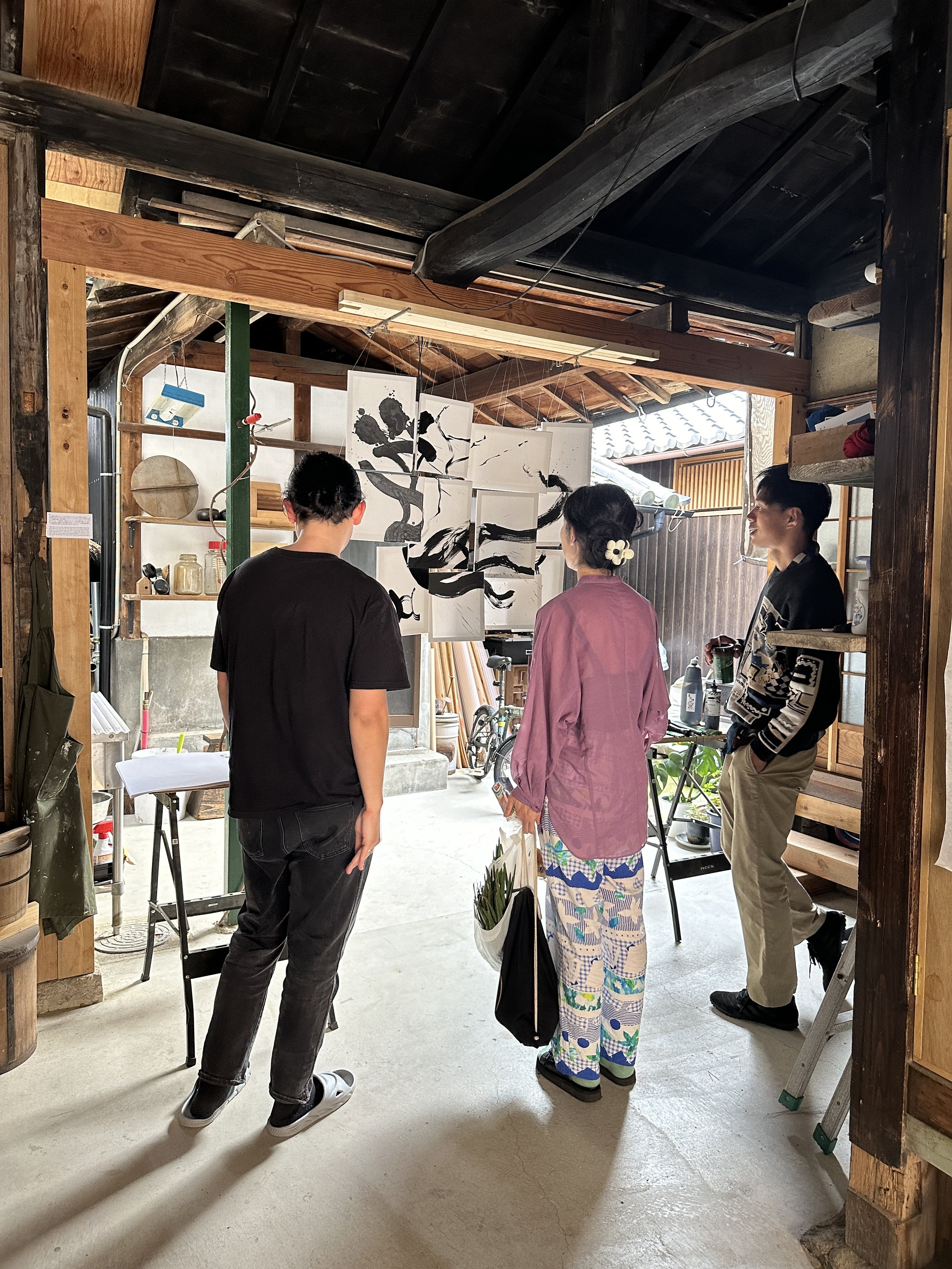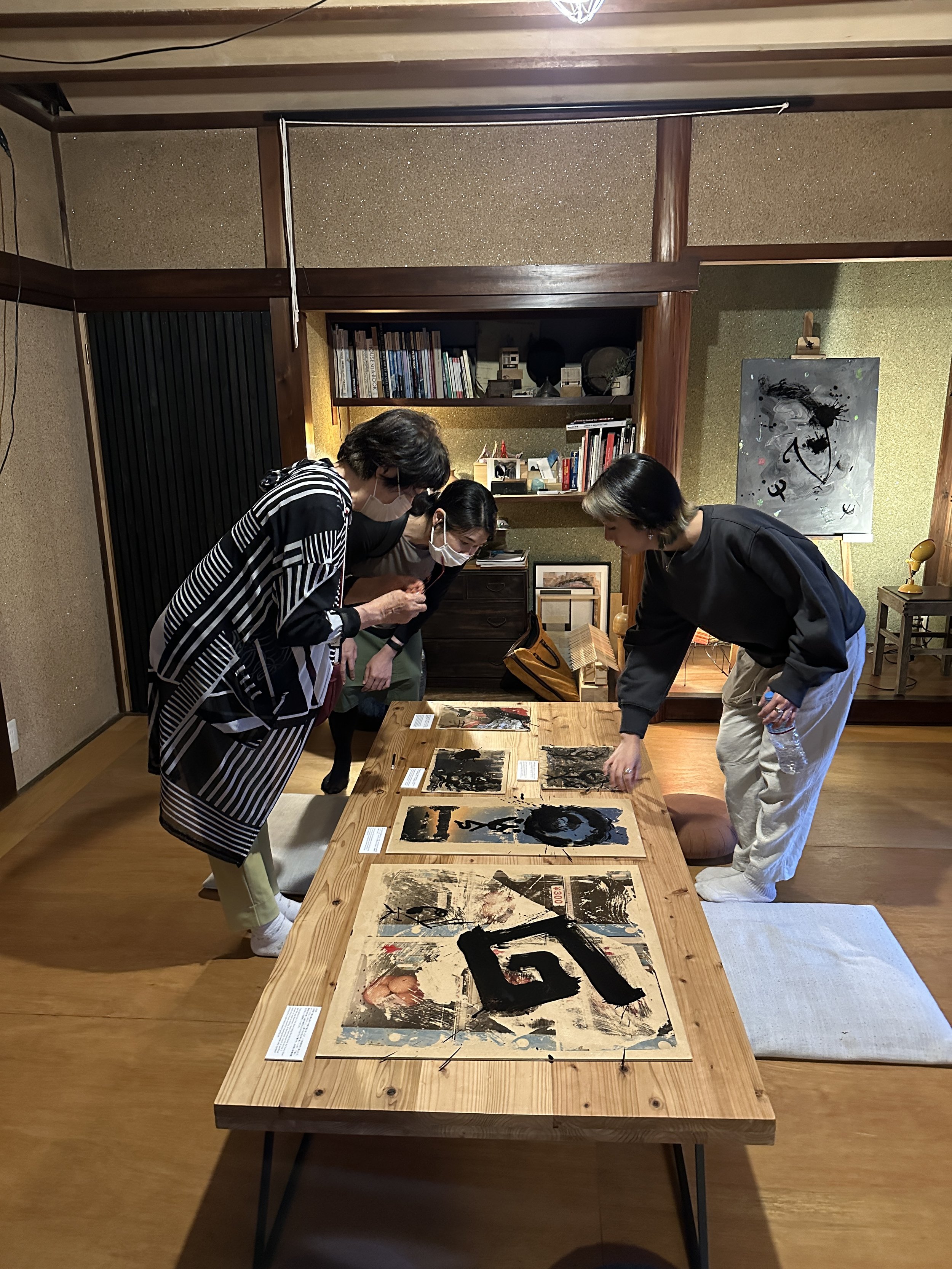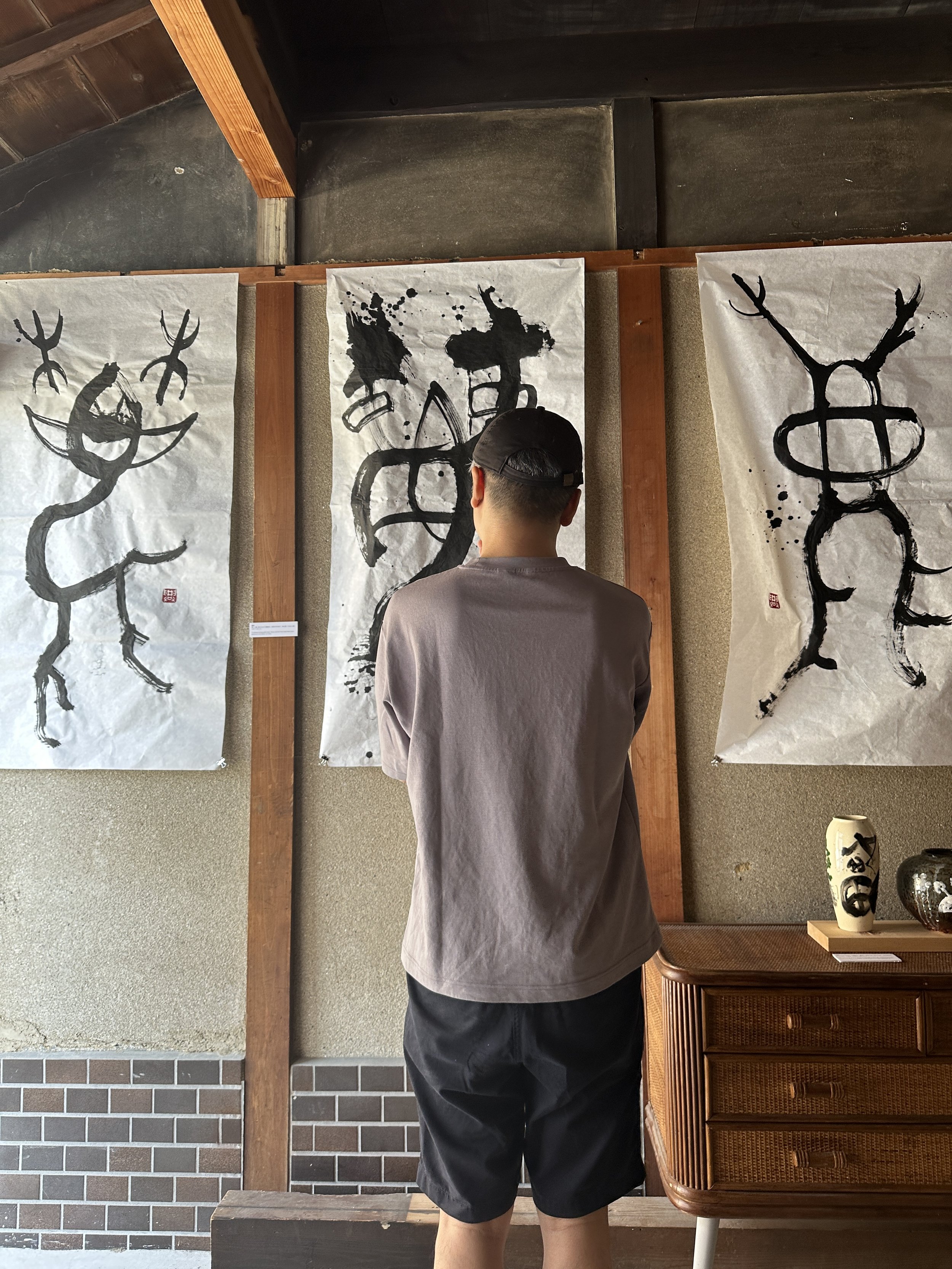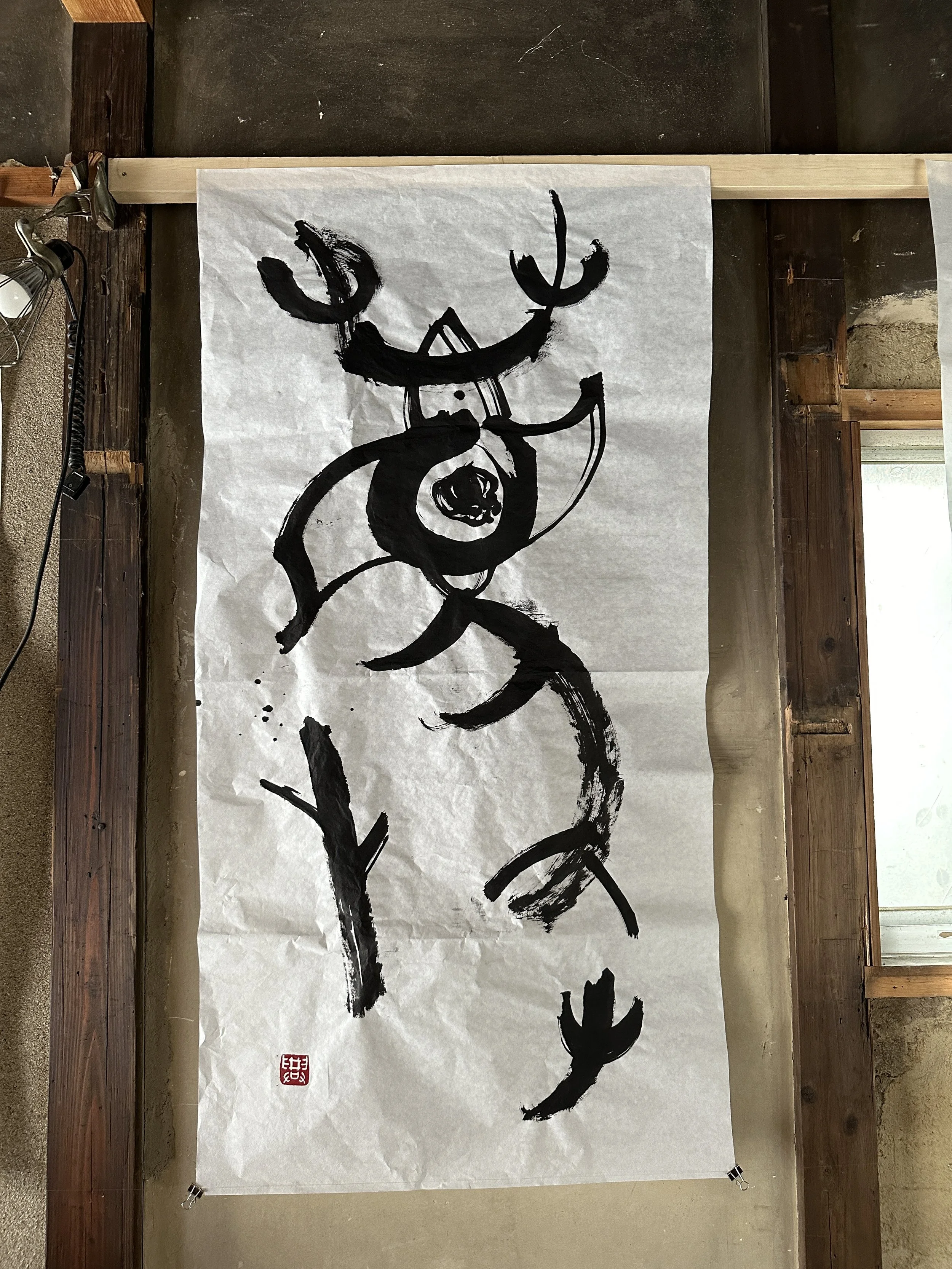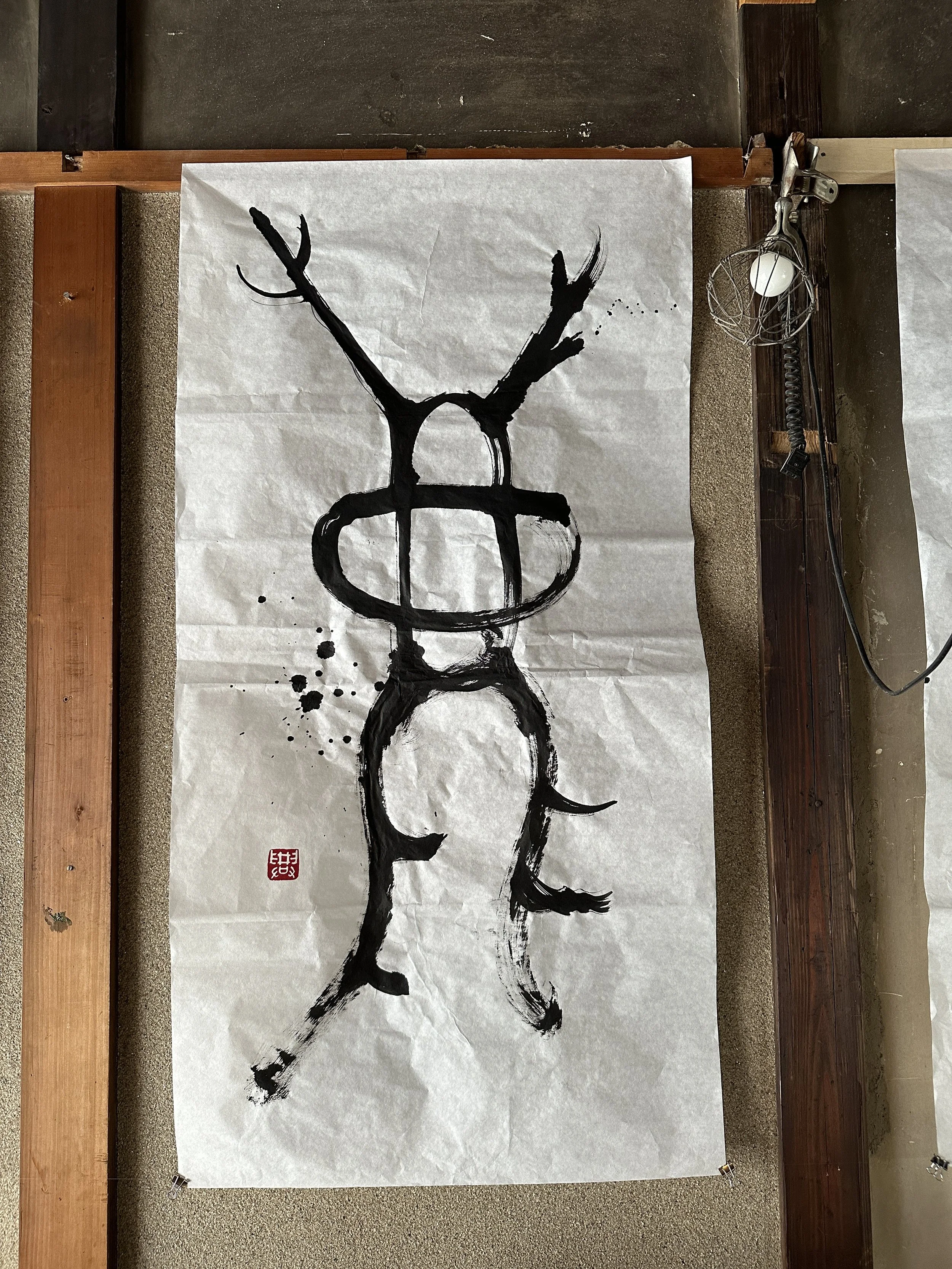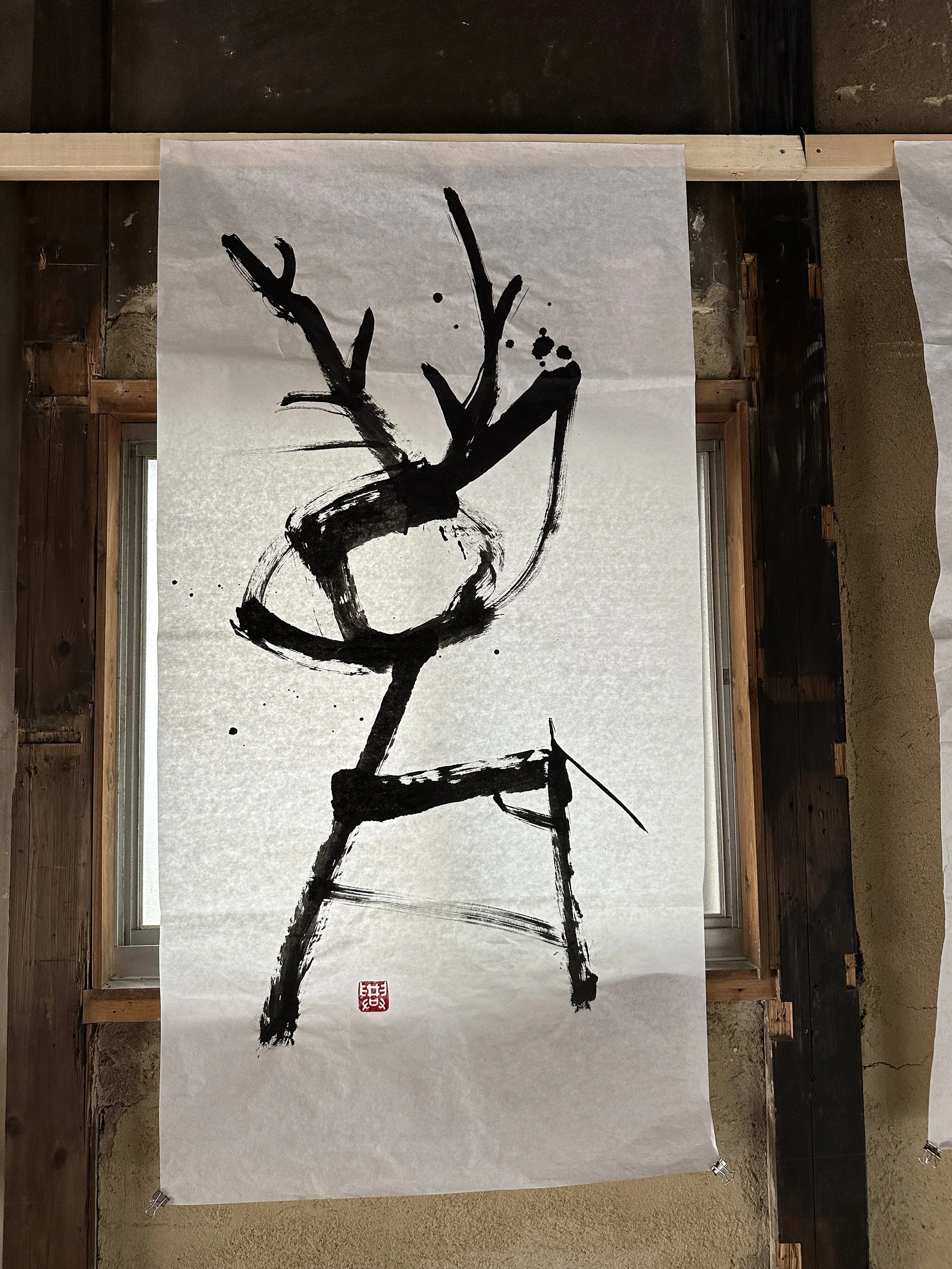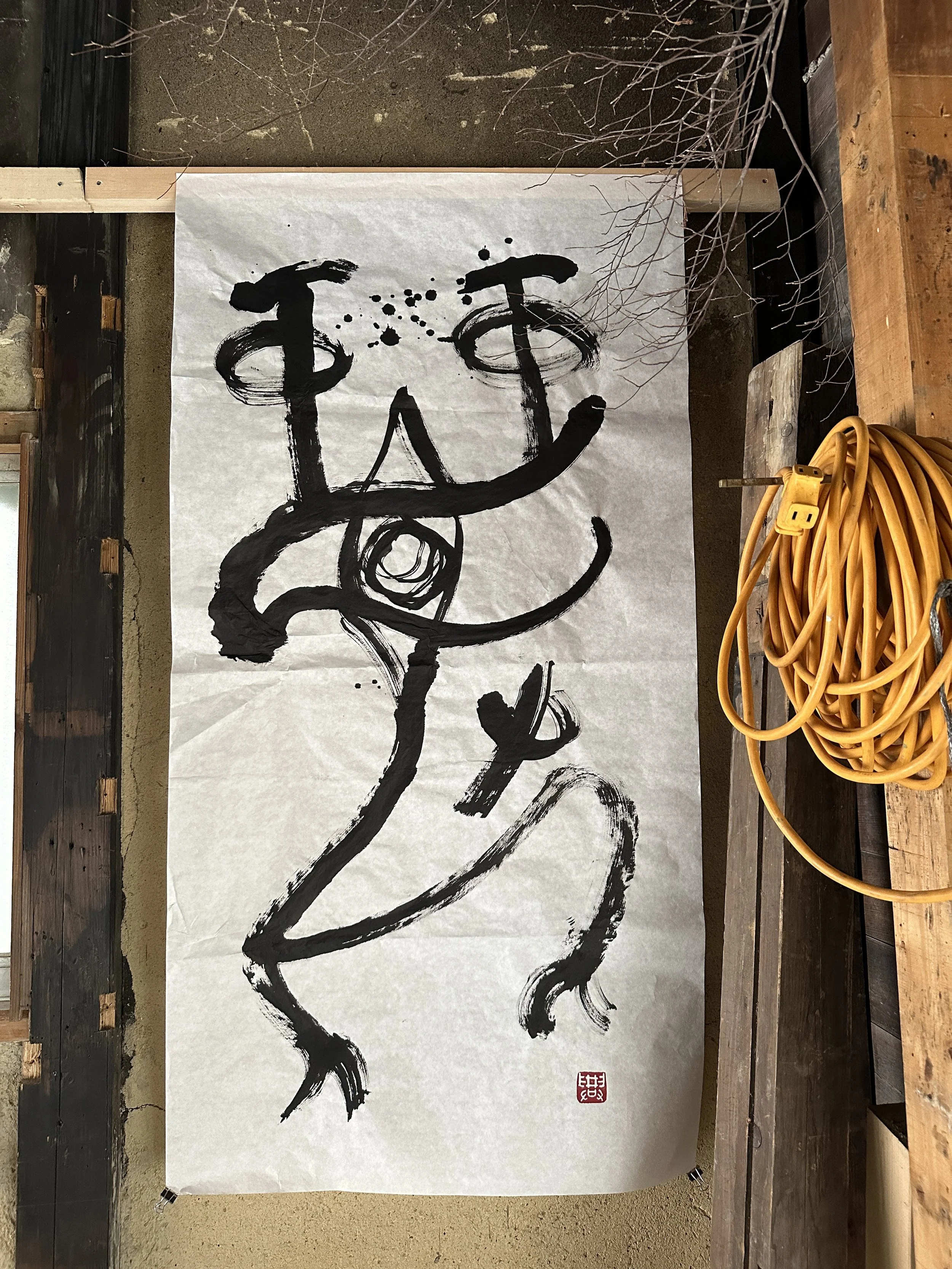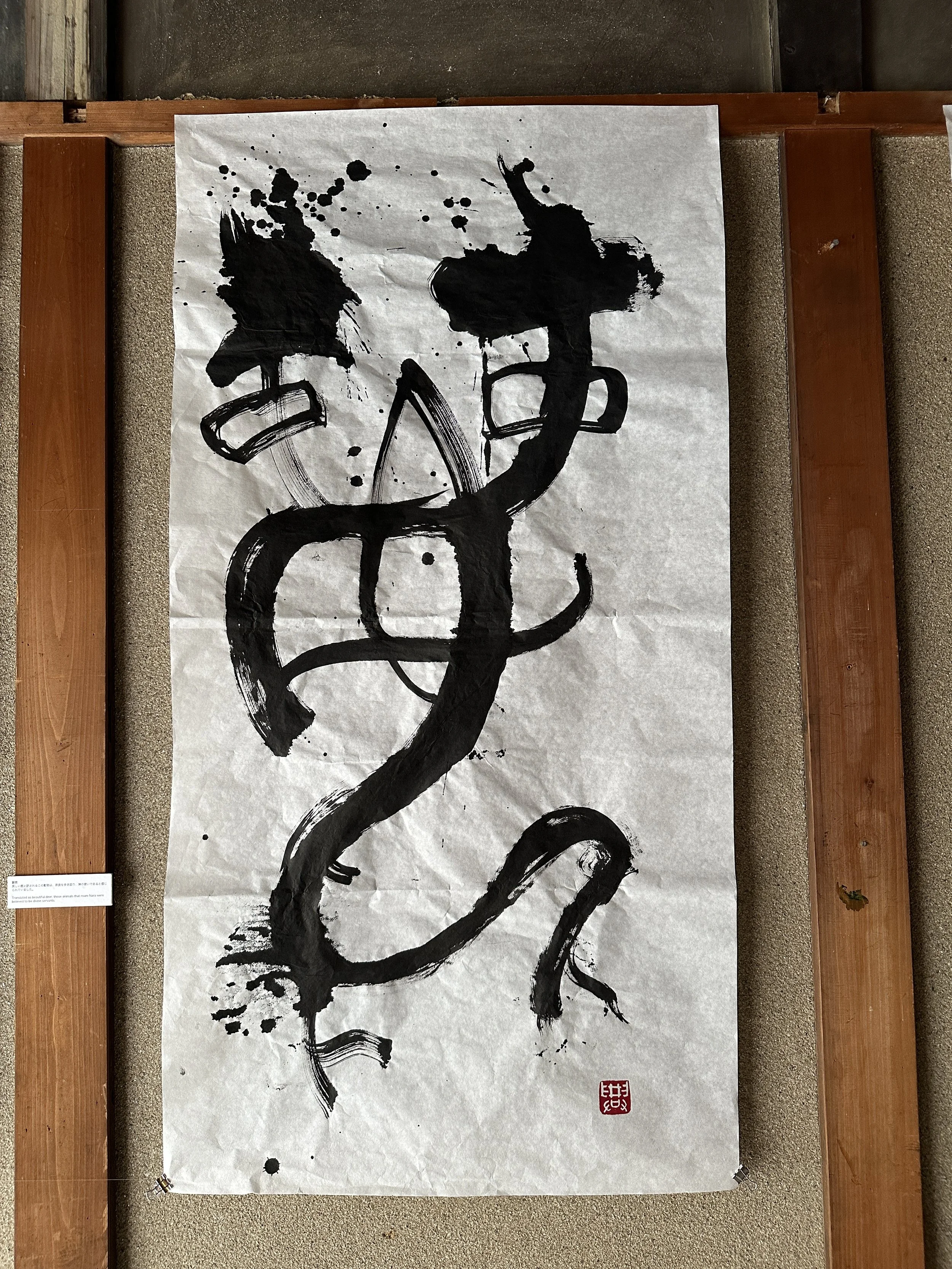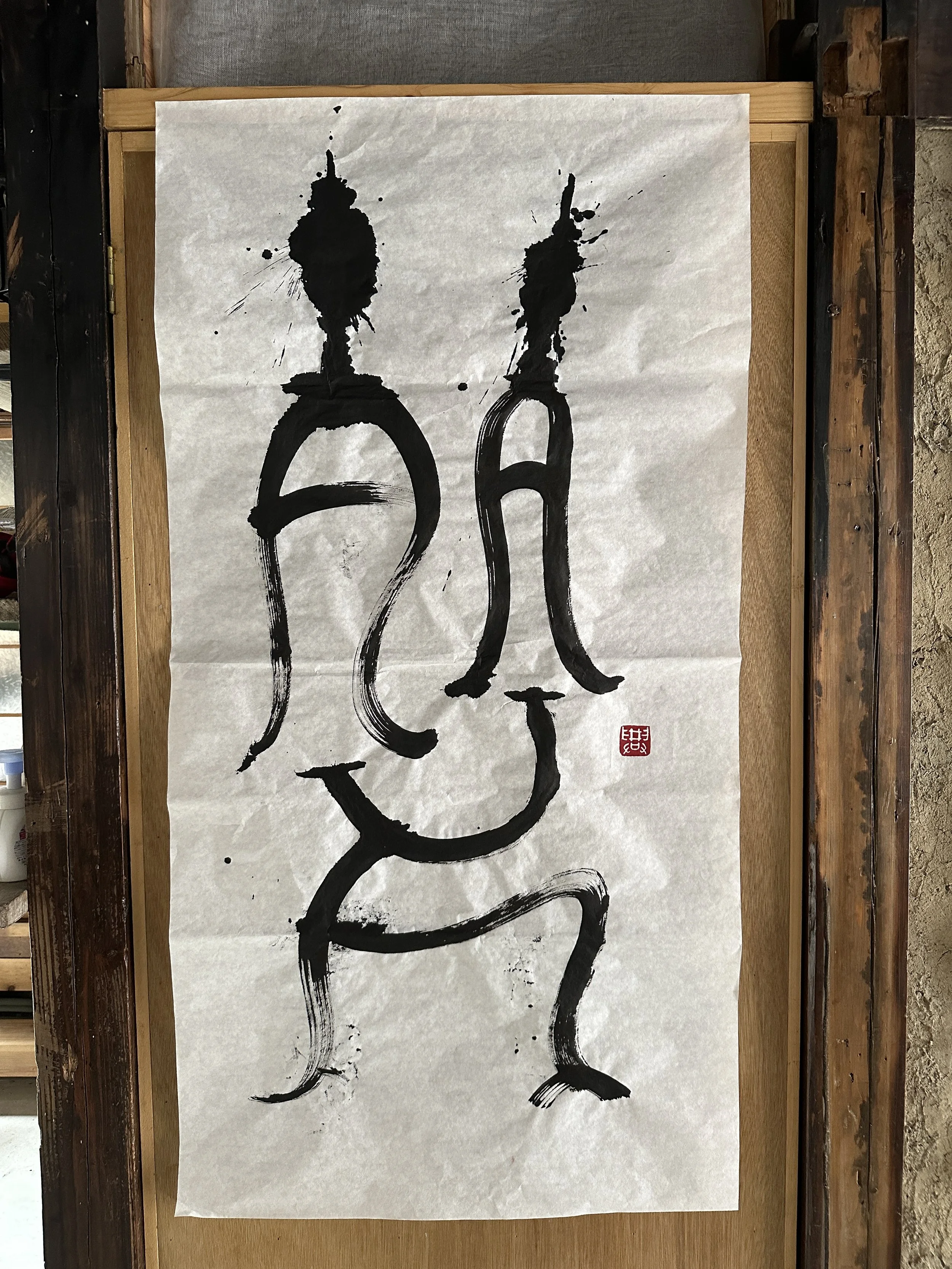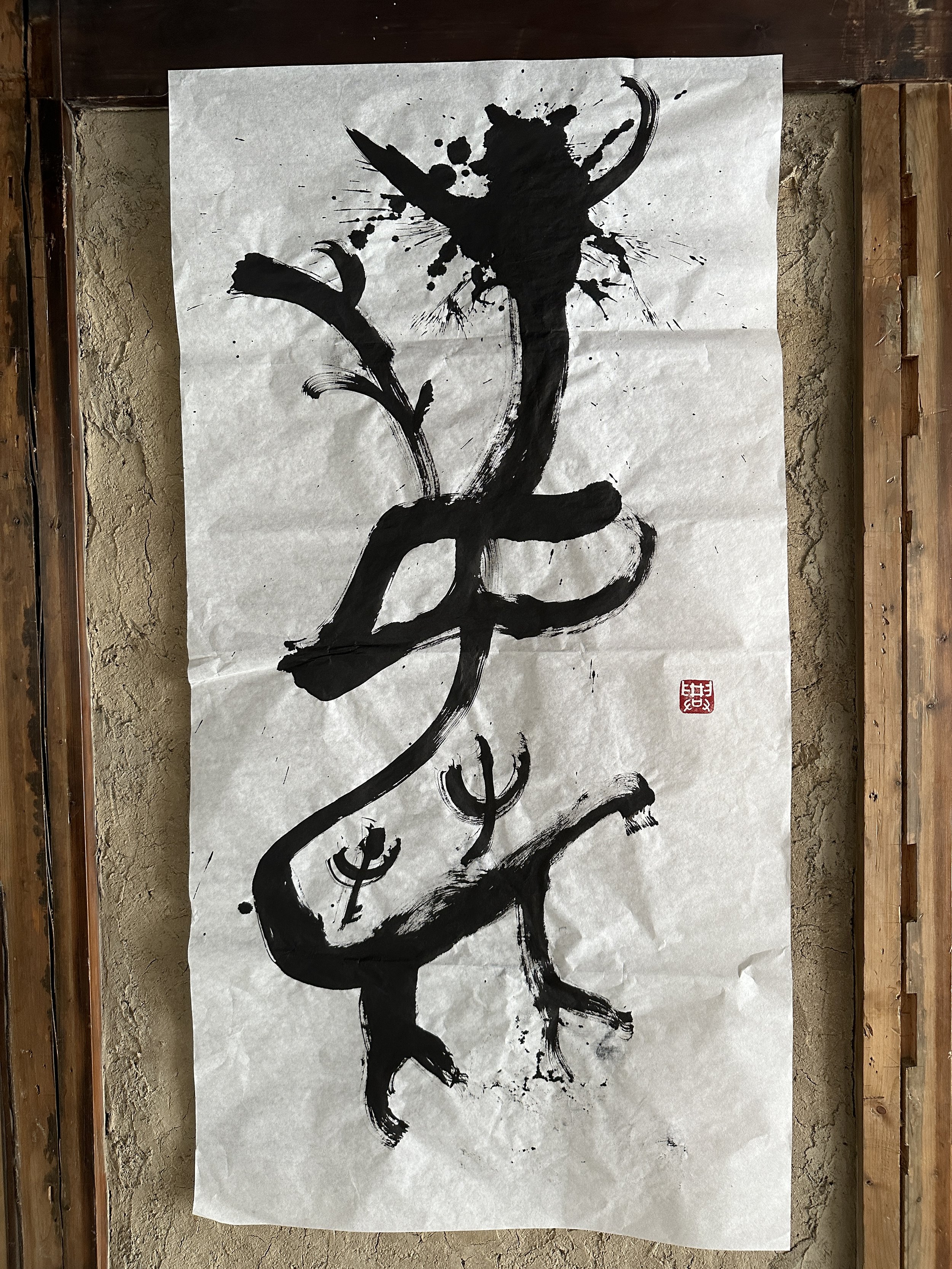Space Department – Nara, Japan
り– DISCOVER
Mew’s recent art practice aims to revive and reimagine the origins of the Japanese kanji writing system in a contemporary perspective. Originating from China, it is the oldest language in continual use, and is the only surviving pictographic language in the world. In this exhibition presented at his art residency at Space Department Nara, り-discover invites us all to rewind, and experience the world through ancient characters – where our ancestors communicated themes of life and death with a sense of awe. Mew hopes to share his experiences and encounters within Nara through a selection of carefully chosen ancient characters.
-

日光 (Daylight)
Ink on wood board
2024 -

墨 (Ink)
Ink on wood board
2024 -

回 帰 (Return)
Ink on wood board
2024 -

神 (Divine)
Ink on wood board
2024 -

楽 (Raku)
Ink on wood board
2024 -

華 (Flower arrangement)
Synthetic polymer on canvas
2024
麗鹿 deer series
風 (wind)
Acrylic on stretched canvas – This kanji originated from a depiction of a mythical bird with a crown, with large powerful wings, long trailing feathers, a tail and a sail. The bird was believed to cause wind which it would then catch in its sail.




